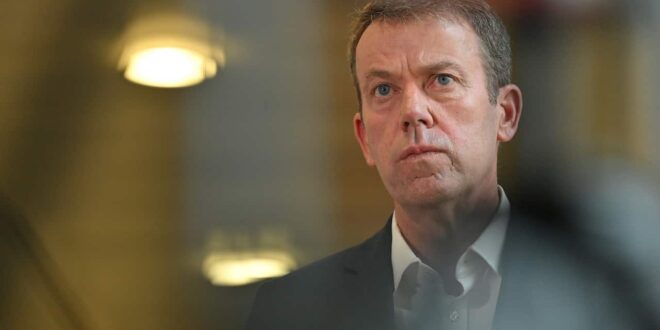The federal department responsible for the operation to keep watch on the convicted criminals released after is refusing to reveal who is responsible for drone surveillance on them.
Under pressure to explain the decision by his departmental delegate to exempt convicted murderers from ankle bracelet monitoring, Immigration Minister Andrew Giles .
Giles said that law enforcement agencies had been funded as part of Operation AEGIS to keep track of the group released after .
“That’s enabled things like using drones to keep track of these people we know where they are,” the minister told Sky News last week.
He was further pressed to explain why more monitoring was not in place.
“There is so much being done for this cohort, spot checks, random house checks, as well as the use of drones as I just touched on.”
SBS World News has been told by a federal source, not authorised to comment publicly, that Border Force is not using drones for the surveillance of the group.
Federal Police also , and despite being one of the key agencies involves in Operation AEGIS had not been present for any discussions about the use of drones.
The shadow immigration minister Dan Tehan on Saturday demanded an explanation from Andrew Giles to detail where and when drones are being used, and which authority is responsible.
Shadow Minister for Immigration Dan Tehan. Source: AAP / Mick Tsikas
He has questioned whether drone monitoring is happening at all.
The Immigration Minister’s office continues to say the comments made in the interview were accurate.
“The Minister’s comments were correct,” a spokesperson said.
SBS World News asked the Home Affairs Department which agency or law enforcement authority was manning the drones, and asked for a yes or no answer to the question of whether any drones have actually been deployed.
A response was received late Saturday afternoon, it did not address the specific questions.
“Operation AEGIS may use aerial imagery from a variety of sources for operational planning purposes, for example to confirm the location of a BVR holder’s accommodation,” the Home Affairs representative said.
“This imagery can also assist identify facilities in proximity of the accommodation that may be relevant to an individual’s visa conditions.”
SBS has contacted state and territory police forces to try and confirm whether the drone surveillance is operating through local police, but so far has either been directed back to the AFP or told that drones are not being used.
Former AFP officer and intelligence expert Dr John Coyne, who now works for the Australian Strategic Policy Institute has questioned whether drones have been deployed in any meaningful way to monitor the detainees who have been released.
He said the use of drones would be “impractical and resource intensive” and is not appropriate for continuous pervasive surveillance.
“Moreover it raises a number of privacy concerns for Australians and Australian communities,” Dr Coyne said.
“Law enforcements use of surveillance and surveillance technologies is highly regulated for obvious reasons.”
He further questioned whether stretched law enforcement would have the capacity to deal with the drone surveillance operation and in particular staff the constant monitoring involved, asserting the significant resources required for such operations “exposes the community to other risks”.
 Unmanned Aerial Vehicle The latest drone news
Unmanned Aerial Vehicle The latest drone news




